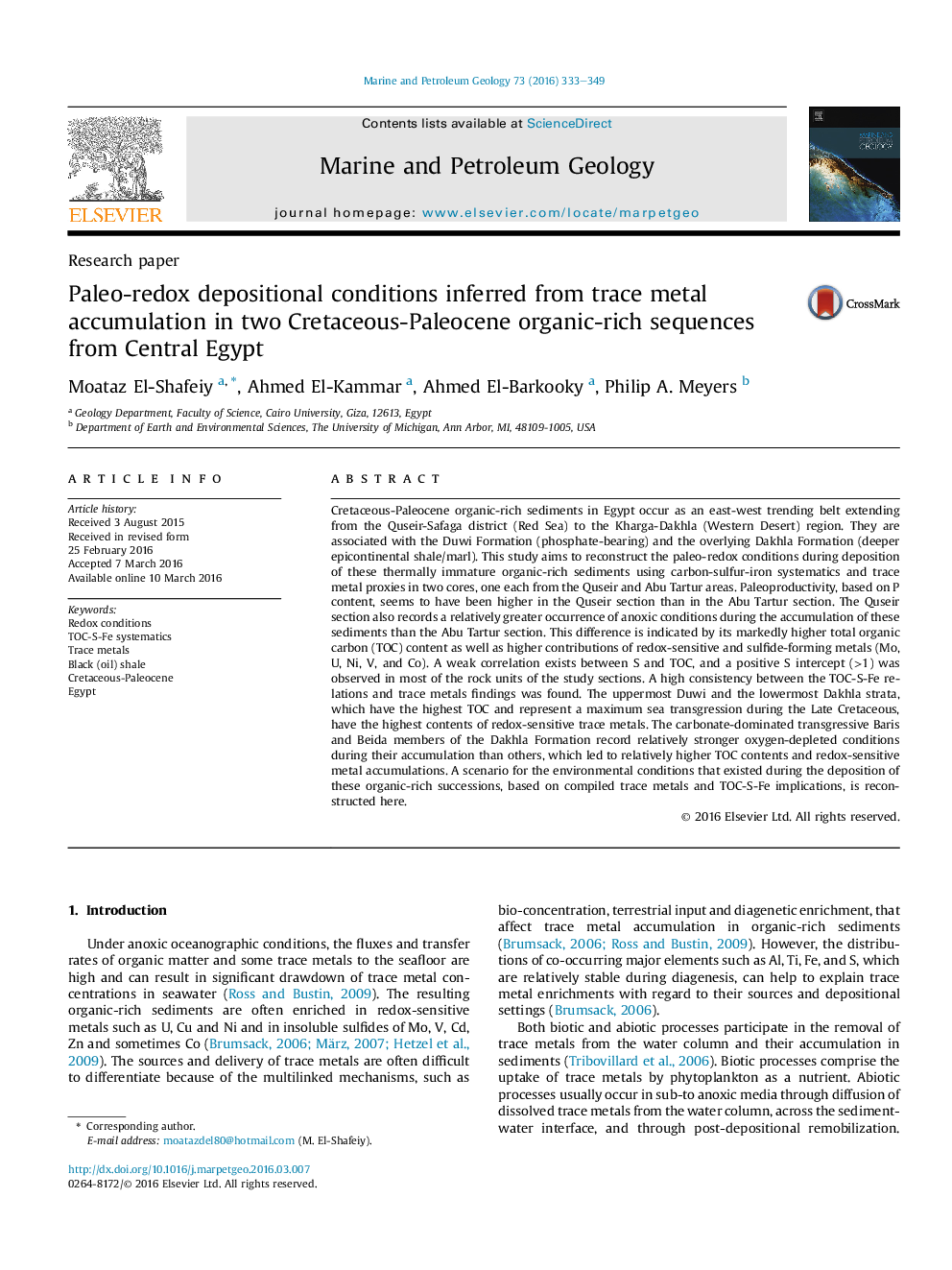| کد مقاله | کد نشریه | سال انتشار | مقاله انگلیسی | نسخه تمام متن |
|---|---|---|---|---|
| 6434811 | 1637154 | 2016 | 17 صفحه PDF | دانلود رایگان |
- Organic productivity was higher during Quseir Section deposition than Abu Tartur Section.
- The trace metals typify more anoxic/sulfidic condition for Quseir than Abu Tartur Sections.
- High trace metals content parallels the transgressive phases and maximum flooding surfaces.
Cretaceous-Paleocene organic-rich sediments in Egypt occur as an east-west trending belt extending from the Quseir-Safaga district (Red Sea) to the Kharga-Dakhla (Western Desert) region. They are associated with the Duwi Formation (phosphate-bearing) and the overlying Dakhla Formation (deeper epicontinental shale/marl). This study aims to reconstruct the paleo-redox conditions during deposition of these thermally immature organic-rich sediments using carbon-sulfur-iron systematics and trace metal proxies in two cores, one each from the Quseir and Abu Tartur areas. Paleoproductivity, based on P content, seems to have been higher in the Quseir section than in the Abu Tartur section. The Quseir section also records a relatively greater occurrence of anoxic conditions during the accumulation of these sediments than the Abu Tartur section. This difference is indicated by its markedly higher total organic carbon (TOC) content as well as higher contributions of redox-sensitive and sulfide-forming metals (Mo, U, Ni, V, and Co). A weak correlation exists between S and TOC, and a positive S intercept (>1) was observed in most of the rock units of the study sections. A high consistency between the TOC-S-Fe relations and trace metals findings was found. The uppermost Duwi and the lowermost Dakhla strata, which have the highest TOC and represent a maximum sea transgression during the Late Cretaceous, have the highest contents of redox-sensitive trace metals. The carbonate-dominated transgressive Baris and Beida members of the Dakhla Formation record relatively stronger oxygen-depleted conditions during their accumulation than others, which led to relatively higher TOC contents and redox-sensitive metal accumulations. A scenario for the environmental conditions that existed during the deposition of these organic-rich successions, based on compiled trace metals and TOC-S-Fe implications, is reconstructed here.
Journal: Marine and Petroleum Geology - Volume 73, May 2016, Pages 333-349
